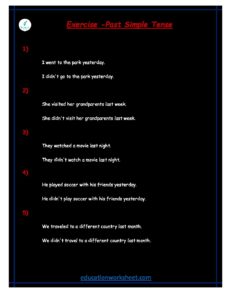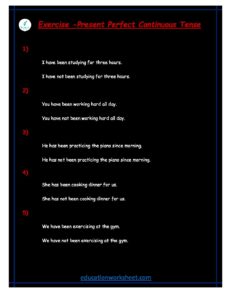changing Past Continuous Tense to negative and positive worksheets
changing Past Continuous Tense to negative and positive
Positive Past Continuous Tense: The positive past continuous tense is used to describe actions that were ongoing in the past. It is formed by using the past tense of the auxiliary verb “to be” (was/were) and the base form of the main verb with the -ing suffix.
For example:
- She was studying when I called.
- They were playing football all afternoon.
Negative Past Continuous Tense:

To change a positive past continuous sentence to a negative one, we use the auxiliary verb “was not” or “were not.”
For example:
- She wasn’t studying when I called.
- They weren’t playing football all afternoon.
Positive Past Continuous to Negative Past Continuous:

Changing from a positive to a negative past continuous sentence typically involves inserting “not” into the sentence to negate the action.
For example:
- Positive: I was reading a book. Negative: I wasn’t reading a book.
- Positive: He was cooking dinner. Negative: He wasn’t cooking dinner.
Negative Past Continuous to Positive Past Continuous:

Converting a negative past continuous sentence to a positive one usually entails removing the “not” to affirm the action.
For example:
- Negative: They weren’t working hard. Positive: They were working hard.
- Negative: I wasn’t listening to music. Positive: I was listening to music.
In summary, transforming past continuous tense sentences from positive to negative or vice versa involves changing the auxiliary verb “was/were” to its negative form “was not/were not” to make a sentence negative or removing “not” to make it positive. These transformations are essential for expressing actions in the past that were either happening or not happening at a specific time or over a period.

